- Home
- Isaac Asimov
Asimov's New Guide to Science Page 38
Asimov's New Guide to Science Read online
Page 38
McMillan suspected that another transuranium element might be mixed with element 93. The chemist Glenn Theodore Seaberg, together with his co-workers Arthur Charles Wahl and Joseph William Kennedy, soon showed that this was indeed fact, and that the element was number 94.
Since uranium, the supposed end of the periodic table, had been named, at the time of its discovery, for the then newly discovered planet, Uranus, elements 93 and 94 were now named for Neptune and Pluto, planets discovered after Uranus: neptunium and plutonium, respectively. It turned out that these elements exist in nature, for small traces of neptunium and plutonium were later found in uranium ores. So uranium was not the heaviest natural element after all.
Seaborg and a group at the University of California, in which Albert Chiorso was prominent, went on to build more transuranium elements, one after the other. In 1944, by bombarding plutonium with subatomic particles, they created elements 95 and 96, named, respectively, americium (after America) and curium (after the Curies). When they had manufactured a sufficient quantity of americium and curium to work with, they bombarded those elements and successfully produced number 97 in 1949 and number 98 in 1950. These they named berkelium and californium, after Berkeley and California. In 1951, Seaborg and McMillan shared the Nobel Prize in chemistry for this train of achievements.
The next elements were discovered in more catastrophic fashion. Elements 99 and 100 emerged in the first hydrogen-bomb explosion, detonated in the Pacific in November 1952. Although their existence was detected in the explosion debris, the elements were not confirmed and named until after the University of California group made small quantities of both in the laboratory in 1955. The names given them were einsteinium and fermium, for Albert Einstein and Enrico Fermi, both of whom had died some months before. Then the group bombarded a small quantity of einsteinium and formed element 101, which they called mendelevium, after Mendeleev.
The next step came through a collaboration between California and the Nobel Institute in Sweden. The institute carried out a particularly complicated type of bombardment that produced a small quantity of element 102. It was named nobelium, in honor of the institute. The element has been formed by methods other than those described by the first group of workers, so that there was a delay before nobelium was officially accepted as the name of the element.
In 1961, a few atoms of element 103 were detected at the University of California, and it was given the name lawrencium, after E. O. Lawrence, who had recently died. In 1964, a group of Soviet scientists under Georgii Nikolaevich Flerov reported the formation of element 104, and, in 1967, the formation of element 105. In both cases, the methods used to form the elements could not be confirmed, and American teams under Albert Ghiorso formed them in other ways. The Soviet group named 104 kurchatovium, after Igor Vasilievich Kurchatov, who had led the Soviet team who developed their atomic bomb, and had died in 1960. The American group named 104 rutherfordium and 105 hahnium, after Ernest Rutherford and Otto Hahn, both of whom made key discoveries in subatomic structure. Elements as high as 109 have been reported.
SUPER-HEAVY ELEMENTS
Each step in this climb up the transuranium scale was harder than the one before. At each successive stage, the element became harder to accumulate and more unstable. When mendelevium was reached, identification had to be made on the basis of seventeen atoms, no more. Fortunately, radiation-detecting techniques were marvelously refined by 1955. The Berkeley scientists actually hooked up their instruments to a firebell, so that every time a mendelevium atom was formed, the characteristic radiation it emitted on breaking down announced the event by a loud and triumphant ring of the bell. (The fire department soon put a stop to this.)
The higher elements were detected under even more rarefied conditions A single atom of a desired element can be detected by noting the breakdown products in detail.
Is there any point in trying to go ever farther, aside from the thrill of breaking a record and getting your name in the record book as the discoverer of an element? (Lavoisier, the greatest of all chemists, never managed such a discovery, and his failure bothered him greatly.)
One important possible discovery remains to be made. The increase in instability as one goes up the scale of atomic numbers is not uniform. The most complex of the stable atoms is bismuth (83). After it, the six elements from 84 to 89 inclusive are so unstable that any amount present at the time of the formation of the earth would be all gone by now. And then, rather surprisingly, there follow thorium (90) and uranium (92) which are almost stable. Of the original thorium and uranium existing on Earth at the time of its formation, 80 percent of the former and 50 percent of the latter still exist today. Physicists have worked out theories of atomic structure to account for this (as I shall explain in the next chapter); and if those theories are correct, then elements 110 and 114 ought to be more stable than would be expected from their high atomic numbers, There is, therefore, considerable interest in getting to these elements, as a way of testing the theories.
In 1976, there was a report that certain halos (circular black markings in mica) might indicate the presence of these super-heavy elements, The halos arise from the radiation given off by small bits of thorium and uranium, but there are a few extra-large halos that must arise from more energetically radioactive atoms that are yet sufficiently stable to have persisted down to modern times. These might be the super-heavies. Unfortunately the deductions were not supported by scientists generally, and the suggestion was dropped. Scientists are still looking,
Electrons
When Mendeleev and his contemporaries found that they could arrange the elements in a periodic table composed of families of substances showing similar properties, they had no notion why the elements fell into such groups or why the properties were related. Eventually a clear and rather simple answer emerged, but it came only after a long series of discoveries that at first seemed to have nothing to do with chemistry.
It all began with studies of electricity. Faraday performed every experiment with electricity he could think of, and one of the things he tried to do was to send an electric discharge through a vacuum. He was not able to get a vacuum good enough for the purpose. But, by 1854, a German glass blower named Heinrich Geissler had invented an adequate vacuum pump and produced a glass tube enclosing metal electrodes in an unprecedentedly good vacuum. When experimenters succeeded in producing electric discharges in the Geissler tube, they noticed that a green glow appeared on the tube wall opposite the negative electrode, The German physicist Eugen Goldstein suggested, in 1876, that this green glow was caused by the impact On the glass of some sort of radiation originating at the negative electrode, which Faraday had named the cathode. Goldstein called the radiation cathode rays.
Were the cathode rays a form of electromagnetic radiation? Goldstein thought so, but the English physicist William Crookes and some others said no: they were a stream of particles of some kind. Crookes designed improved versions of the Geissler tube (called Crookes tubes), and with these he was able to show that the rays were deflected by a magnet. Thus, they were probably made up of electrically charged particles.
In 1897, the physicist Joseph John Thomson settled the question beyond doubt by demonstrating that the cathode rays could also be deflected by electric charges, What, then, were these cathode “particles”? The only negatively charged particles known at the time were the negative ions of atoms.
Experiments showed that the cathode-ray particles could not possibly be such ions, for they were so strongly deflected by an electromagnetic field that they must have an unthinkably high electric charge or else must be extremely light particles with less than 1/1,000 the mass of a hydrogen atom. The latter interpretation turned out to fit the evidence best. Physicists had already guessed that the electric current was carried by particles, and so these cathode-ray particles were accepted as the ultimate particles of electricity. They were called electrons—a name that had been suggested in 1891 by the Irish physicist George Johnst
one Stoney. The electron was finally determined to have 1/1,837 the mass of a hydrogen atom. (For establishing its existence, Thomson was awarded the Nobel Prize in physics in 1906.)
The discovery of the electron at once suggested that it might be a subparticle of the atom—in other words, that atoms were not the ultimate, indivisible units of matter that Democritus and John Dalton had pictured them to be.
This was a hard pill to swallow, but the lines of evidence converged inexorably. One of the most convincing items was Thomson’s showing that negatively charged particles that came out of a metal plate when it was struck by ultraviolet radiation (the photoelectric effect) were identical with the electrons of the cathode rays. The photoelectric electrons must have been knocked out of the atoms of the metal.
THE PERIODICITY OF THE PERIODIC TABLE
Since electrons could easily be removed from atoms (by other means as well as by the photoelectric effect), it was natural to conclude that they were located in the outer regions of the atom. If so, there must be a positively charged region within the atom balancing the electrons’ negative charges, because the atom as a whole was normally neutral. It was at this point that investigators began to close in on the solution of the mystery of the periodic table.
To remove an electron from an atom takes a little energy. Conversely, when an electron falls into the vacated place in the atom, it must give up an equal amount of energy. (Nature is usually symmetrical, especially when it comes to considerations of energy.) This energy is released in the form of electromagnetic radiation. Now, since the energy of radiation is measured in terms of wavelength, the wavelength of the radiation emitted by an electron falling into a particular atom will indicate the force with which the electron is held by that atom. The energy of radiation increases with shortening wavelength: the greater the energy, the shorter the wavelength.
We arrive, then, at Moseley’s discovery that metals (that is, the heavier elements) produced X rays, each at a characteristic wavelength, which decreased in regular fashion as one went up the periodic table. Each successive element, it seemed, held its electrons more strongly than the one before—another way of saying that each had a successively stronger positive charge in its internal region.
Assuming that each unit of positive charge corresponded to the negative charge on an electron, it followed that the atom of each successive element must have one more electron than the one before. The simplest way of picturing the periodic table, then, was to suppose that the first element, hydrogen, had 1 unit of positive charge and 1 electron; the second element, helium, 2 positive charges and 2 electrons; the third, lithium, 3 positive charges and 3 electrons; and so on all the way up to uranium, with 92 positive charges and 92 electrons. So the atomic numbers of the elements turned out to represent the number of electrons in their intact atoms.
One more major clue and the atomic scientists had the answer to the periodicity of the periodic table. It developed that the electronic radiation of a given element is not necessarily restricted to a single wavelength; it might emit radiations at two, three, four, or even more different wavelengths. These sets of radiations were named the K-series, the L-series; the M-series, and so on. The investigators concluded that the electrons are arrayed in shells around the positively charged core of the atom. The electrons of the innermost shell are most strongly held, and their removal takes the most energy. An electron falling into this shell would emit the most energetic radiation, that is, of the shortest wavelengths, or the K-series. The electrons of the next innermost shell are responsible for the L-series of radiations; the next shell produces the M-series; and so on. Consequently, the shells were called the K-shell, the L-shell, the M-shell, and so on.
By 1925, the Austrian physicist Wolfgang Pauli advanced his exclusion principle, which explained just how electrons are distributed within each shell, since no two electrons can possess, according to this principle, exactly the same values of quantum numbers. For this work, Pauli received the Nobel Prize for physics in 1945.
THE NOBLE, OR INERT, GASES
In 1916, the American chemist Gilbert Newton Lewis worked out the kinships of properties and the chemical behavior of some of the simpler elements on the basis of their shell structure. There was ample evidence, to begin with, that the innermost shell was limited to two electrons by Pauli’s exclusion principle. Hydrogen has only one electron; therefore the shell is unfilled. The atom’s tendency is to fill this K-shell, and it can do so in a number of ways. For instance, two hydrogen atoms can pool their single electrons and, by sharing the two electrons, mutually fill their K-shells. Hence, hydrogen gas almost always exists in the form of a pair of atoms—the hydrogen molecule. To separate the two atoms and free them as atomic hydrogen takes a good deal of energy. Irving Langmuir of the General Electric Company, who independently worked out a similar scheme involving electrons and chemical behavior, presented a practical demonstration of the strong tendency of the hydrogen atom to keep its electron shell filled. He made an atomic hydrogen torch by blowing hydrogen gas through an electric arc, which split the molecules’ atoms apart; when the atoms recombined after passing the arc, they liberated the energy they had absorbed in splitting apart, and thus yielded temperatures up to 3400° C!
In helium, element 2, the K-shell is filled with 2 electrons; helium atoms therefore are stable and do not combine with other atoms. When we come to lithium, element 3, we find that 2 of its electrons fill the K-shell, and the third starts the L-shell. The succeeding elements add electrons to this shell one by one: beryllium has 2 electrons in the L-shell, boron has 3, carbon 4, nitrogen 5, oxygen 6, fluorine 7, and neon 8. Eight is the limit for the L-shell, as Pauli had shown; and therefore neon corresponds to helium in having its outermost electron shell filled. And sure enough, it, too, is an inert gas with properties like helium’s.
Every atom with an unfilled outer shell has a tendency to enter into combination with other atoms in such a manner as to leave it with a filled outer shell. For instance, the lithium atom readily surrenders its one L-shell electron so that its outer shell is the filled K, while fluorine tends to seize an electron to add to its seven and complete the L-shell. Therefore lithium and fluorine have an affinity for each other; when they combine, lithium donates its L-electron to fluorine to fill the latter’s L-shell. Since the atoms’ interior positive charges do not change, lithium, with one electron subtracted, now carries a net positive charge, while fluorine, with one extra electron, carries a net negative charge. The mutual attraction of the opposite charges holds the two ions together. The compound is called lithium fluoride (see figure 6.1).
Figure 6.1. Transfer and sharing of electrons. Lithium transfers the electron in its outer shell to fluorine in the combination of lithium fluoride; each atom then has a full outer shell. In the fluorine molecule, two electrons are shared, filling both atoms’ outer shells.
L-shell electrons can be shared as well as transferred. For instance, each of two fluorine atoms can share one of its electrons with the other, so that each atom has a total of eight in its L-shell, counting the two shared electrons.
Similarly, two oxygen atoms will pool a total of four electrons to complete their L-shells; and two nitrogen atoms will share a total of six. Thus fluorine, oxygen, and nitrogen all form two-atom molecules.
The carbon atom, with only four electrons in its L-shell, will share each of them with a different hydrogen atom, thereby filling the K-shells of the four hydrogen atoms and in turn filling its own L-shell by sharing their electrons. This stable arrangement is the methane molecule, CH4.
In the same way, a nitrogen atom will share electrons with three hydrogen atoms to form ammonia; an oxygen atom will share electrons with two hydrogen atoms to form water; a carbon atom will share electrons with two oxygen atoms to form carbon dioxide; and so on. Almost all the components formed by the elements in the first part of the periodic table can be accounted for on the basis of this tendency to complete the outermost shell by giving up electrons, acc
epting electrons, or sharing electrons.
The element after neon—sodium—has 11 electrons, and the eleventh must start a third shell. Then follow magnesium, with 2 electrons in the M-shell, aluminum with 3, silicon with 4, phosphorus with 5, sulfur with 6, chlorine with 7, and argon with 8.
Now each element in this group corresponds to one in the preceding series. Argon, with 8 electrons in the M-shell, is like neon (with 8 electrons in the L-shell) and is an inert gas. Chlorine, having 7 electrons in its outer shell, resembles fluorine closely in chemical properties. Likewise, silicon resembles carbon; sodium resembles lithium; and so on.
So it goes right through the periodic table. Since the chemical behavior of every element depends on the configuration of electrons in its outermost shell, all those with, say, one electron in the outer shell will react in much the same way chemically. Thus, all the elements in the first column of the periodic table—lithium, sodium, potassium, rubidium, cesium, and even the radioactive element francium—are remarkably alike in their chemical properties. Lithium has 1 electron in the L-shell, sodium 1 in the M-shell, potassium 1 in the N-shell, rubidium 1 in the O-shell, cesium 1 in the P-shell, and francium 1 in the Q-shell. Again, all the elements with 7 electrons in their respective outer shells—fluorine, chlorine, bromine, iodine, and astatine—resemble one another. The same is true of the last column in the table—the closed-shell group that includes helium, neon, argon, krypton, xenon, and radon.

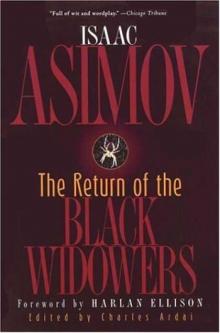 The Return of the Black Widowers
The Return of the Black Widowers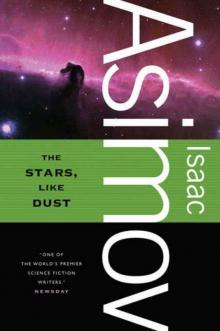 The Stars, Like Dust
The Stars, Like Dust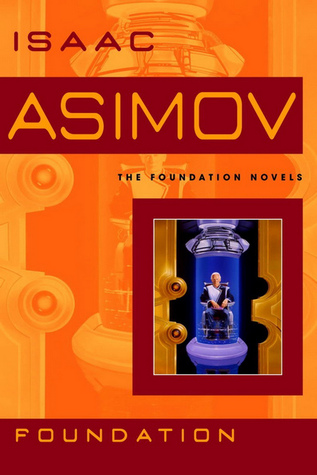 Foundation
Foundation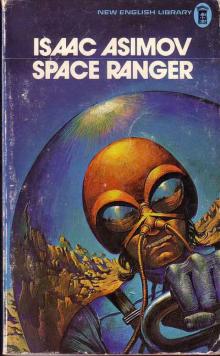 David Starr Space Ranger
David Starr Space Ranger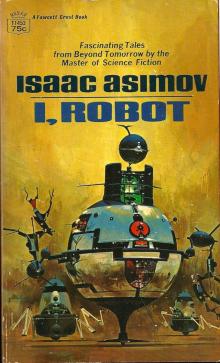 I, Robot
I, Robot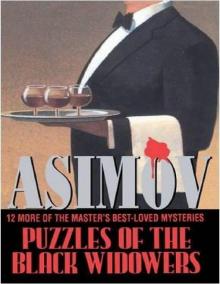 Puzzles of the Black Widowers
Puzzles of the Black Widowers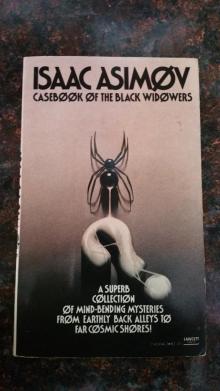 Casebook of the Black Widowers
Casebook of the Black Widowers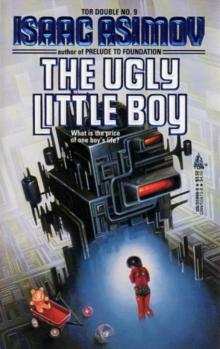 The Ugly Little Boy
The Ugly Little Boy Azazel
Azazel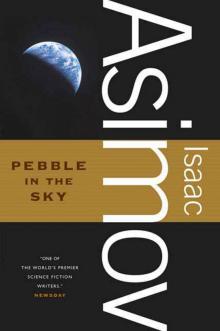 Pebble in the Sky
Pebble in the Sky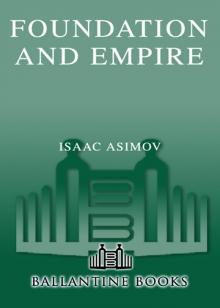 Foundation and Empire
Foundation and Empire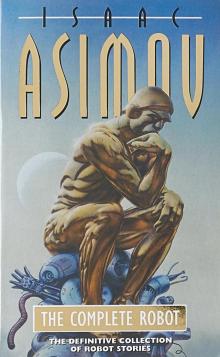 The Complete Robot
The Complete Robot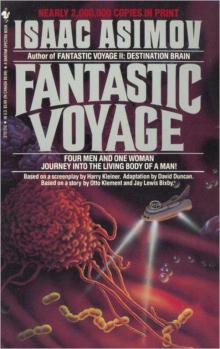 Fantastic Voyage
Fantastic Voyage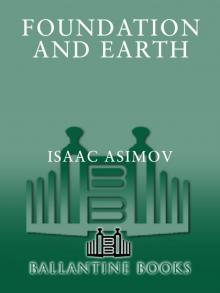 Foundation and Earth
Foundation and Earth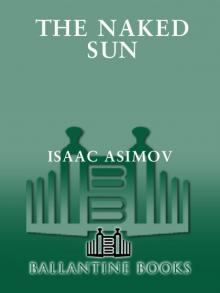 The Naked Sun
The Naked Sun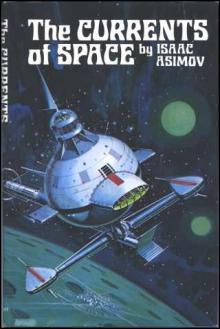 The Currents of Space
The Currents of Space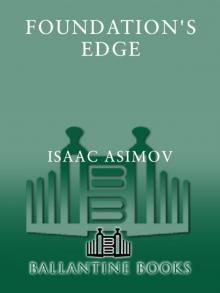 Foundation's Edge
Foundation's Edge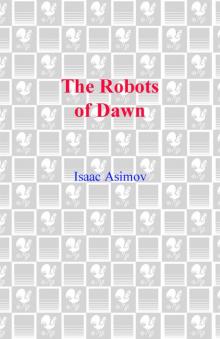 The Robots of Dawn
The Robots of Dawn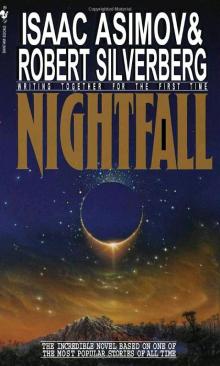 Nightfall
Nightfall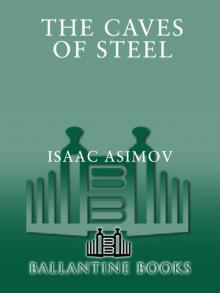 The Caves of Steel
The Caves of Steel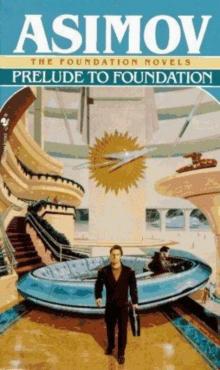 Prelude to Foundation
Prelude to Foundation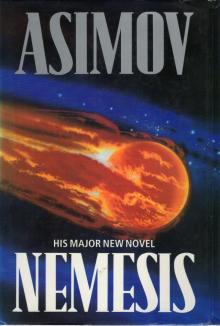 Nemesis
Nemesis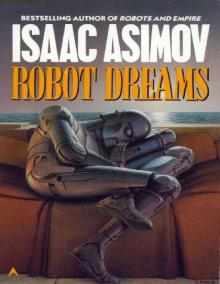 Robot Dreams
Robot Dreams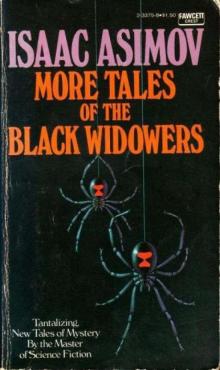 More Tales of the Black Widowers
More Tales of the Black Widowers The Complete Stories
The Complete Stories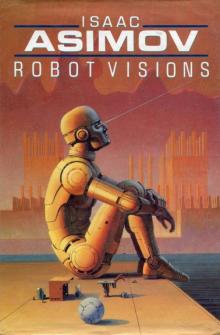 Robot Visions
Robot Visions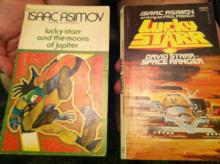 Lucky Starr And The Moons of Jupiter
Lucky Starr And The Moons of Jupiter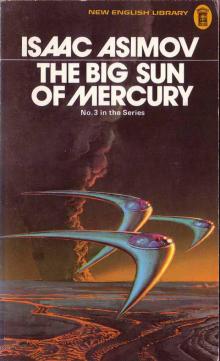 Lucky Starr and the Big Sun of Mercury
Lucky Starr and the Big Sun of Mercury The End of Eternity
The End of Eternity The Bicentennial Man and Other Stories
The Bicentennial Man and Other Stories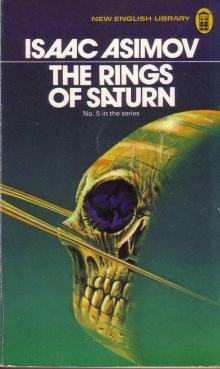 Lucky Starr And The Rings Of Saturn
Lucky Starr And The Rings Of Saturn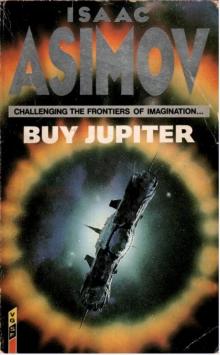 Buy Jupiter and Other Stories
Buy Jupiter and Other Stories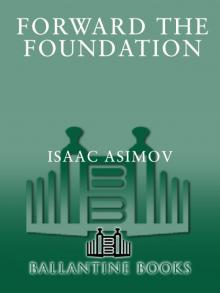 Forward the Foundation
Forward the Foundation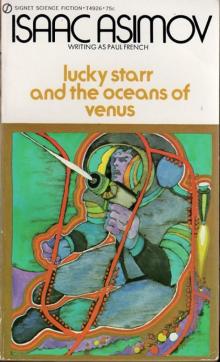 Lucky Starr and the Oceans of Venus
Lucky Starr and the Oceans of Venus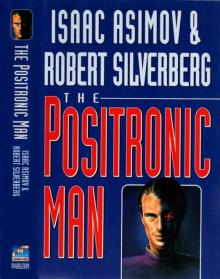 The Positronic Man
The Positronic Man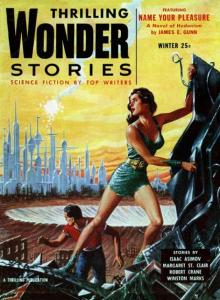 The Portable Star
The Portable Star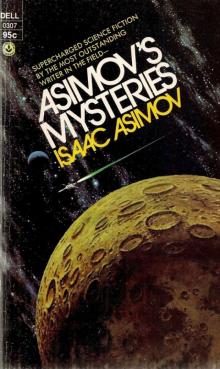 Asimovs Mysteries
Asimovs Mysteries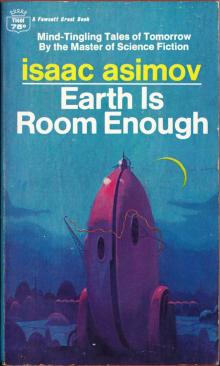 Earth Is Room Enough
Earth Is Room Enough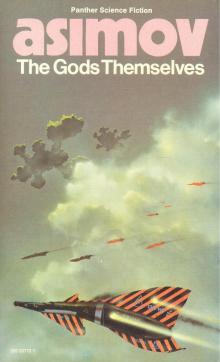 The Gods Themselves
The Gods Themselves Youth
Youth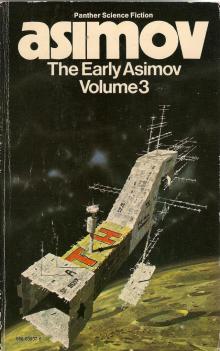 The Early Asimov Volume 3
The Early Asimov Volume 3 The Winds of Change and Other Stories
The Winds of Change and Other Stories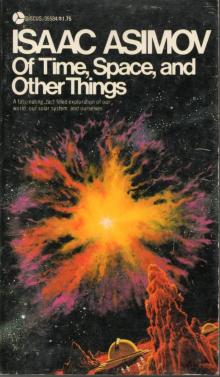 Of Time, Space, and Other Things
Of Time, Space, and Other Things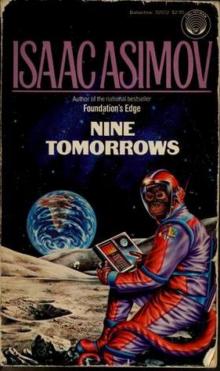 Nine Tomorrows
Nine Tomorrows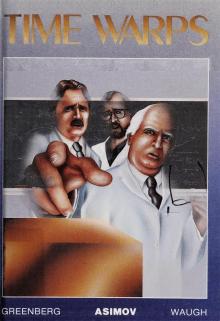 Time Warps
Time Warps Robots and Empire
Robots and Empire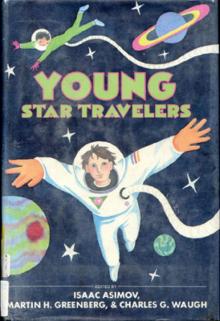 Young Star Travelers
Young Star Travelers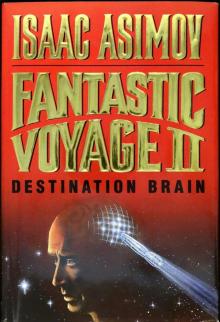 Fantastic Voyage II: Destination Brain
Fantastic Voyage II: Destination Brain Second Foundation
Second Foundation The Rest of the Robots
The Rest of the Robots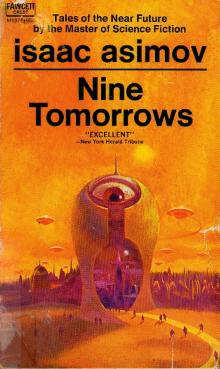 NINE TOMORROWS Tales of the Near Future
NINE TOMORROWS Tales of the Near Future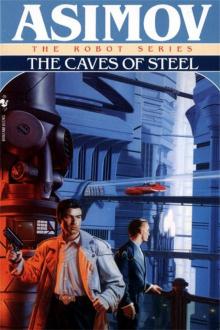 Daneel Olivaw 1 - The Caves of Steel
Daneel Olivaw 1 - The Caves of Steel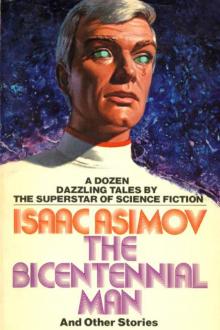 THE BICENTENNIAL MAN
THE BICENTENNIAL MAN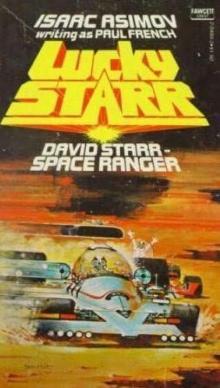 David Starr Space Ranger (lucky starr)
David Starr Space Ranger (lucky starr)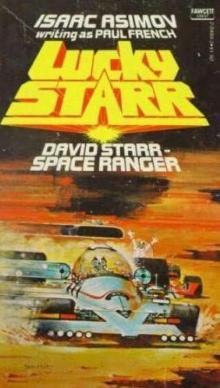 David Starr Space Ranger (ls)
David Starr Space Ranger (ls)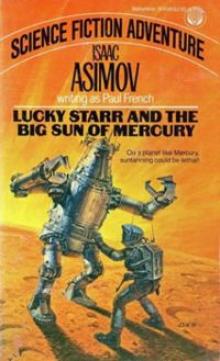 Lucky Starr And The Big Sun Of Mercury ls-4
Lucky Starr And The Big Sun Of Mercury ls-4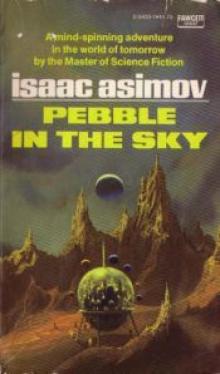 Pebble In The Sky te-1
Pebble In The Sky te-1 Asimov’s Future History Volume 9
Asimov’s Future History Volume 9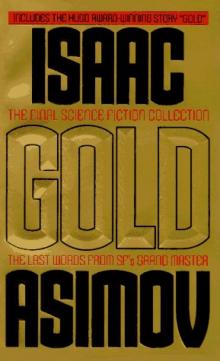 Gold: The Final Science Fiction Collection
Gold: The Final Science Fiction Collection Foundation and Earth f-7
Foundation and Earth f-7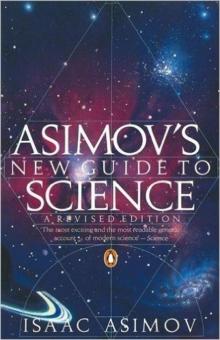 Asimov's New Guide to Science
Asimov's New Guide to Science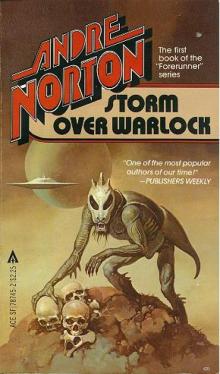 STORM OVER WARLOCK
STORM OVER WARLOCK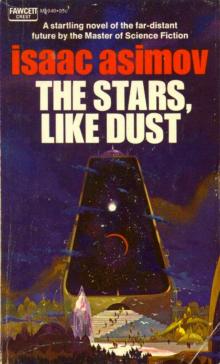 Stars, Like Dust
Stars, Like Dust Norby The Mixed-Up Robot
Norby The Mixed-Up Robot Found!
Found! Asimov’s Future History Volume 11
Asimov’s Future History Volume 11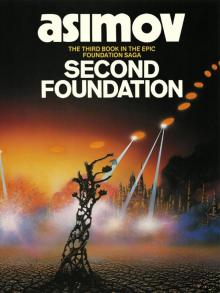 Second Foundation f-5
Second Foundation f-5 Asimov’s Future History Volume 15
Asimov’s Future History Volume 15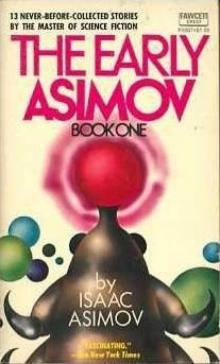 The Early Asimov. Volume 1
The Early Asimov. Volume 1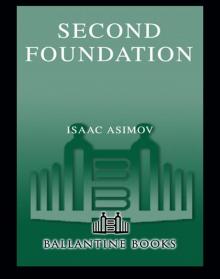 Secound Foundation
Secound Foundation Daneel Olivaw 3 - The Robots of Dawn
Daneel Olivaw 3 - The Robots of Dawn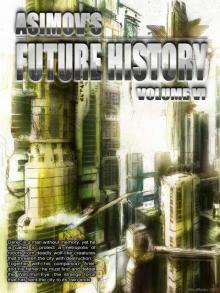 Asimov’s Future History Volume 6
Asimov’s Future History Volume 6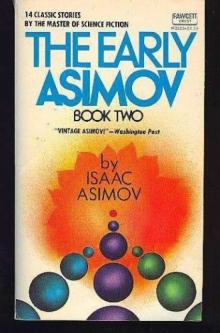 The Early Asimov. Volume 2
The Early Asimov. Volume 2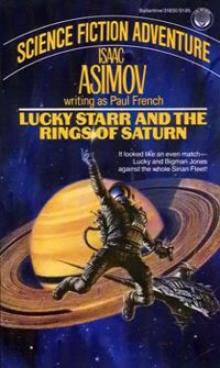 Lucky Starr And The Rings Of Saturn ls-6
Lucky Starr And The Rings Of Saturn ls-6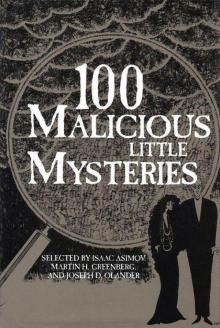 100 Malicious Little Mysteries
100 Malicious Little Mysteries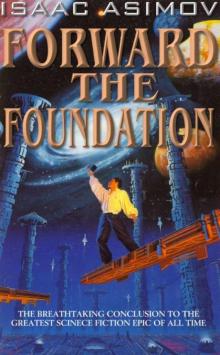 Forward the Foundation f-2
Forward the Foundation f-2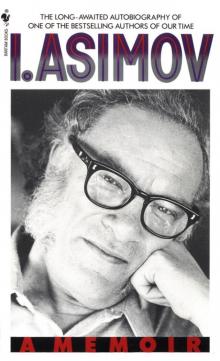 I.Asimov: A Memoir
I.Asimov: A Memoir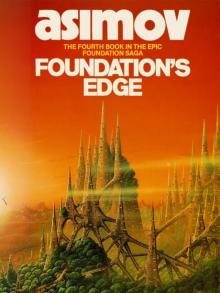 Foundation's Edge f-6
Foundation's Edge f-6 Lucky Starr and the Pirates of the Asteroids ls-2
Lucky Starr and the Pirates of the Asteroids ls-2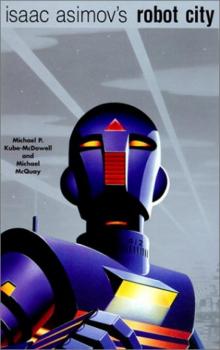 Robot City 1 & 2
Robot City 1 & 2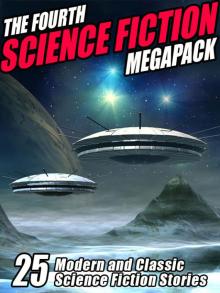 The Fourth Science Fiction Megapack
The Fourth Science Fiction Megapack Asimov’s Future History Volume 16
Asimov’s Future History Volume 16 The Dim Rumble
The Dim Rumble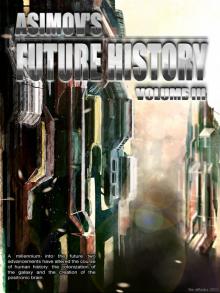 Asimov's Future History Volume 3
Asimov's Future History Volume 3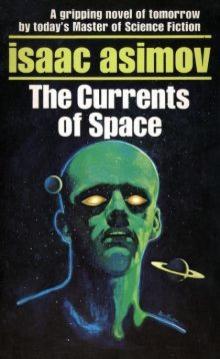 The Currents Of Space te-3
The Currents Of Space te-3 Asimov’s Guide To Shakespear. Volume 1
Asimov’s Guide To Shakespear. Volume 1 Asimov’s Future History Volume 13
Asimov’s Future History Volume 13 Asimov’s Future History Volume 12
Asimov’s Future History Volume 12 The Secret Sense
The Secret Sense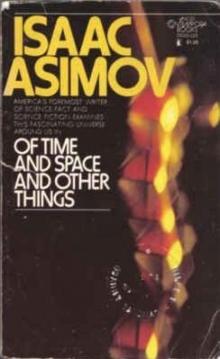 Of Time and Space and Other Things
Of Time and Space and Other Things Norby tnc-2
Norby tnc-2 Norby The Mixed-Up Robot tnc-1
Norby The Mixed-Up Robot tnc-1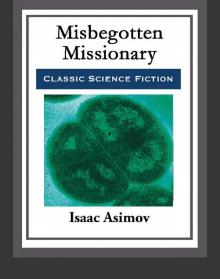 Misbegotten Missionary
Misbegotten Missionary Asimov’s Future History Volume 19
Asimov’s Future History Volume 19 Fantastic Voyage II: Destination Brain fv-2
Fantastic Voyage II: Destination Brain fv-2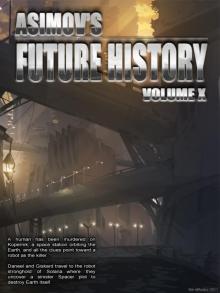 Asimov’s Future History Volume 10
Asimov’s Future History Volume 10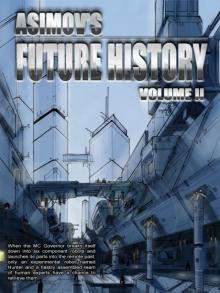 Asimov's Future History Volume 2
Asimov's Future History Volume 2 Feeling of Power
Feeling of Power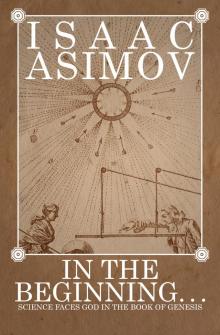 In the Beginning
In the Beginning The Caves of Steel trs-1
The Caves of Steel trs-1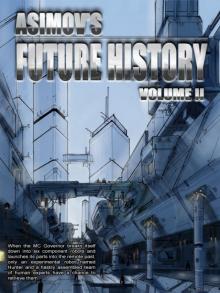 Asimov's Future History Vol 2
Asimov's Future History Vol 2 Caliban c-1
Caliban c-1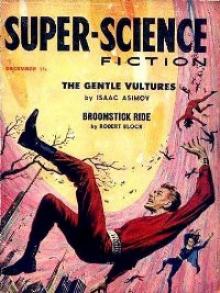 The Gentle Vultures
The Gentle Vultures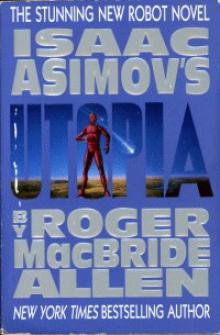 Utopia c-3
Utopia c-3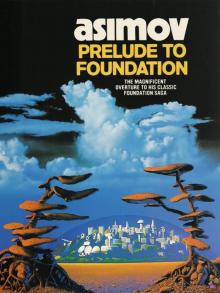 Prelude to Foundation f-1
Prelude to Foundation f-1 Short Stories Vol.1
Short Stories Vol.1 Asimov’s Future History Volume 8
Asimov’s Future History Volume 8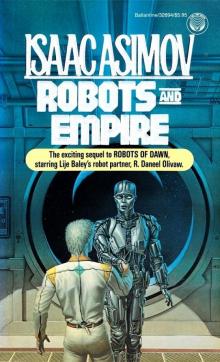 Daneel Olivaw 4 - Robots and Empire
Daneel Olivaw 4 - Robots and Empire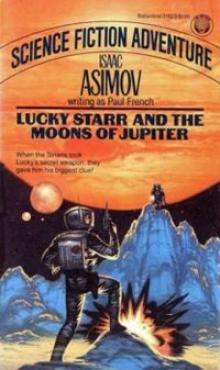 Lucky Starr The And The Moons of Jupiter ls-5
Lucky Starr The And The Moons of Jupiter ls-5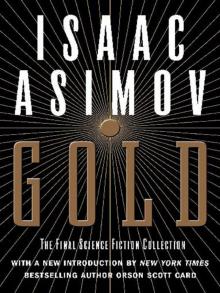 Gold
Gold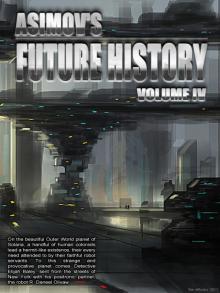 Asimov’s Future History Volume 4
Asimov’s Future History Volume 4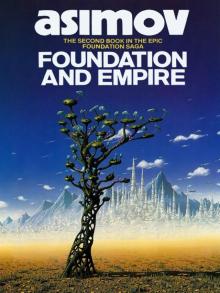 Foundation and Empire f-4
Foundation and Empire f-4 Potential
Potential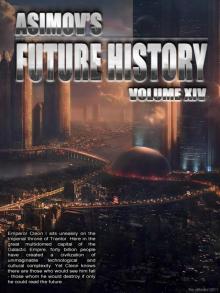 Asimov’s Future History Volume 14
Asimov’s Future History Volume 14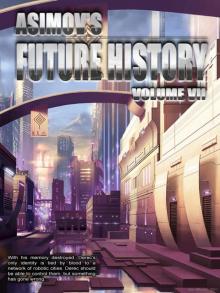 Asimov’s Future History Volume 7
Asimov’s Future History Volume 7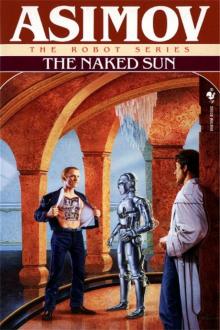 Daneel Olivaw 2 - The Naked Sun
Daneel Olivaw 2 - The Naked Sun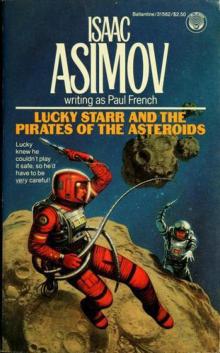 Lucky Starr and the Pirates of the Asteroids
Lucky Starr and the Pirates of the Asteroids Foundation f-3
Foundation f-3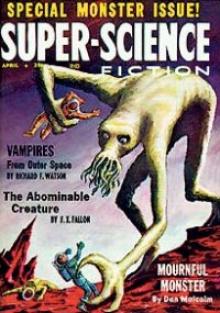 All the Troubles of the World
All the Troubles of the World Cleon the Emperor
Cleon the Emperor Asimov's Future History Volume 5
Asimov's Future History Volume 5 Asimov’s Future History Volume 20
Asimov’s Future History Volume 20 Robots and Empire trs-4
Robots and Empire trs-4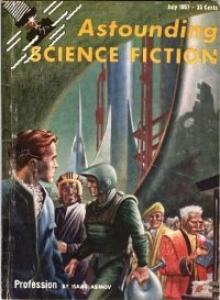 Profession
Profession It's Been a Good Life
It's Been a Good Life The Robots of Dawn trs-3
The Robots of Dawn trs-3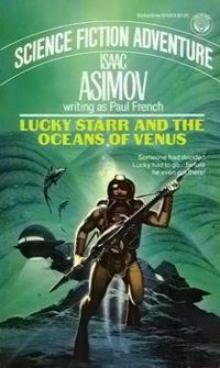 Lucky Starr And The Oceanf Of Venus ls-3
Lucky Starr And The Oceanf Of Venus ls-3 The Naked Sun trs-2
The Naked Sun trs-2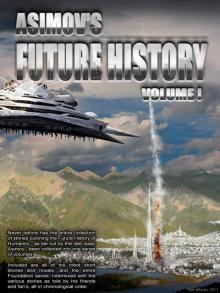 Asimov's Future History Volume 1
Asimov's Future History Volume 1